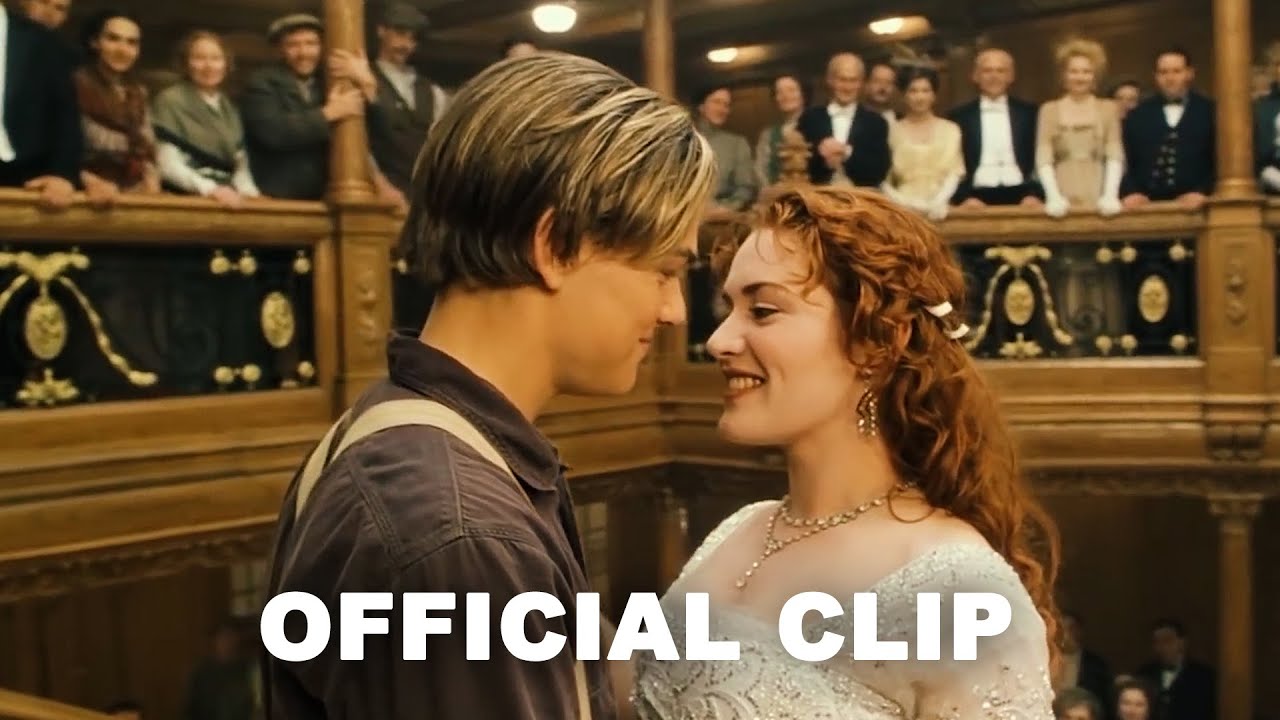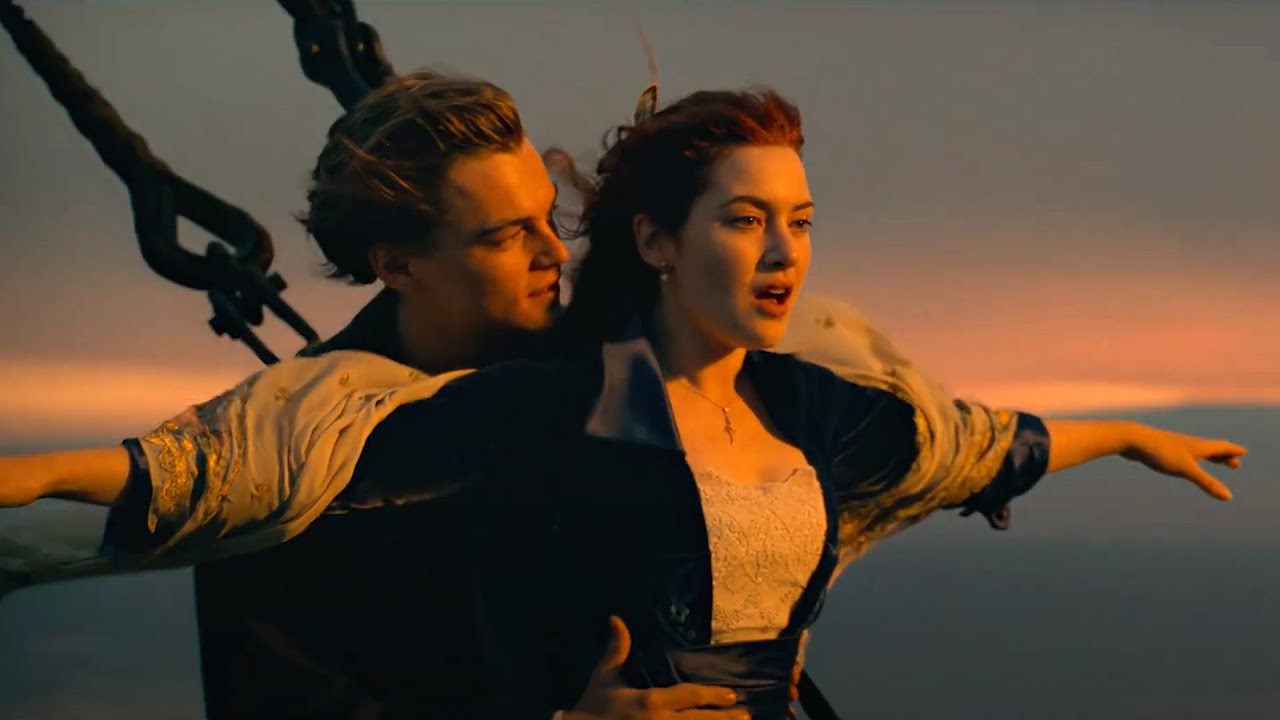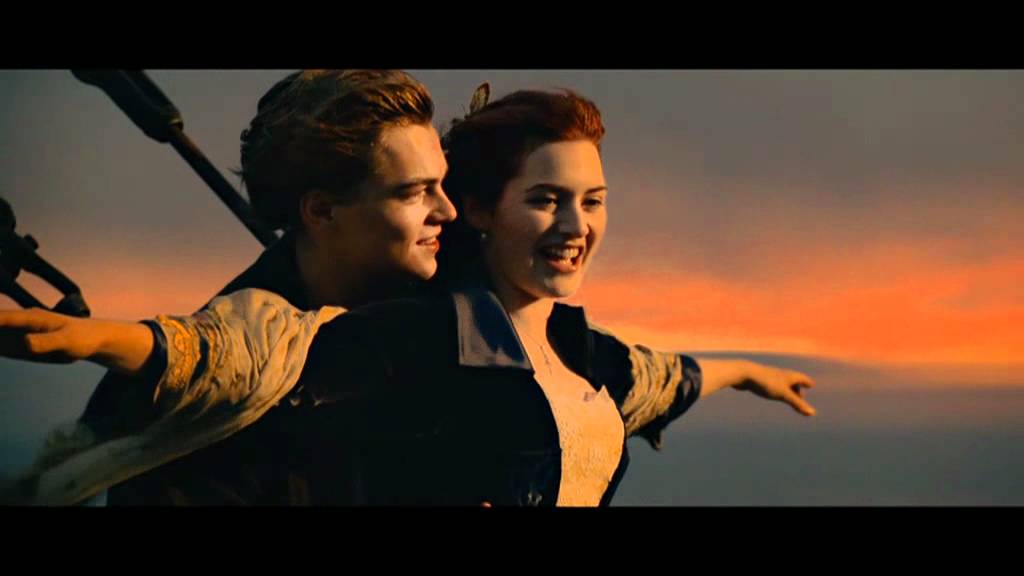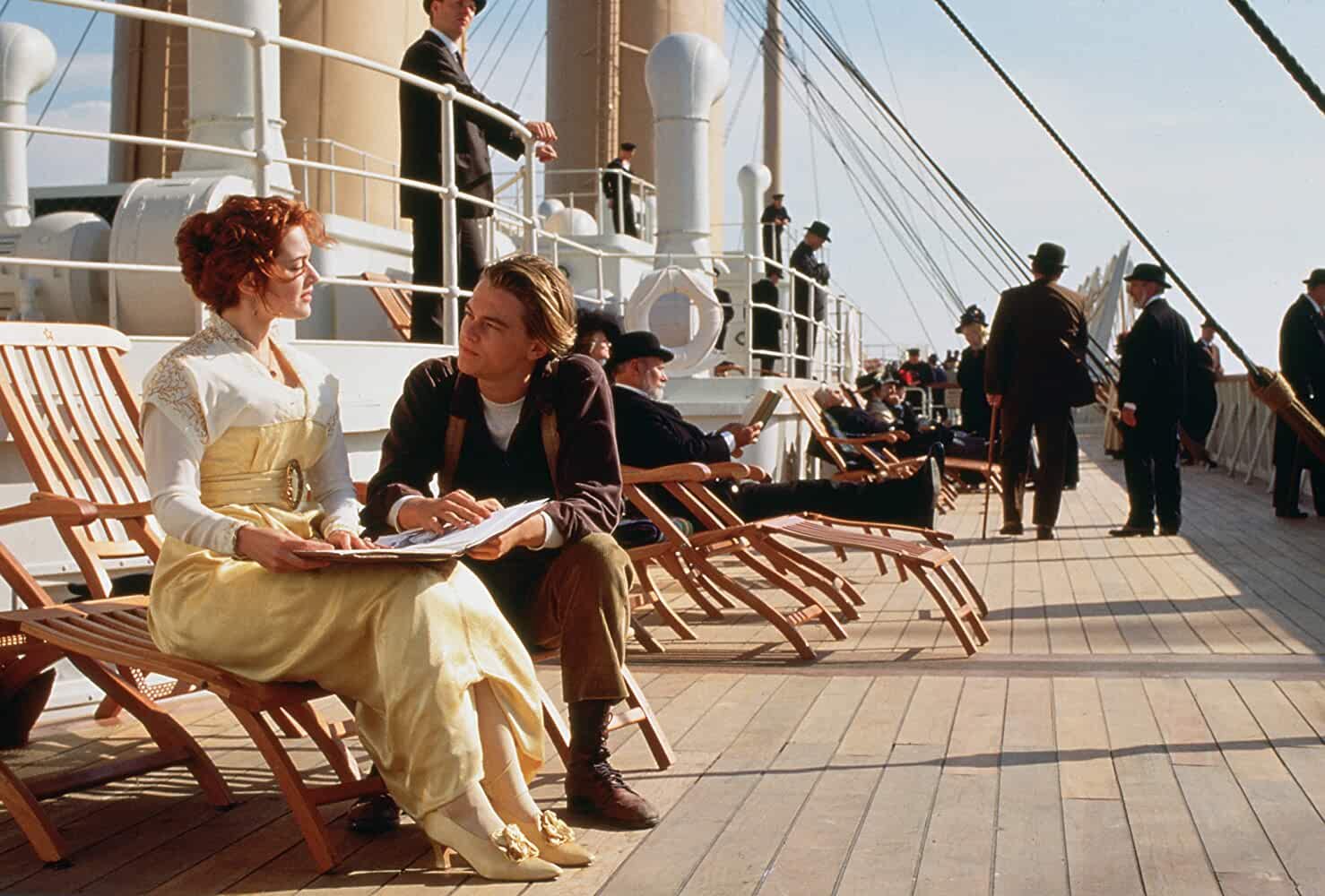🎬 Titanic (1997): A Tragic Romance Set Against the Icy Waves of History

Titanic (1997), directed by James Cameron, is a sweeping epic that blends historical tragedy with a fictional love story aboard one of the most famous ships in history. Starring Leonardo DiCaprio and Kate Winslet, the film captures the doomed voyage of the RMS Titanic, which sank on April 15, 1912, after colliding with an iceberg. With its breathtaking visual effects, unforgettable romance, and emotional depth, Titanic became a monumental cinematic achievement, earning 11 Academy Awards and becoming one of the highest-grossing films of all time.
Plot Overview:
The film begins in the present day, as treasure hunter Brock Lovett (Bill Paxton) and his team explore the wreck of the Titanic in search of a rare diamond, the Heart of the Ocean. During the expedition, they recover a drawing of a woman wearing the diamond, which leads them to Rose Dawson Calvert (Gloria Stuart), a 100-year-old survivor of the disaster. Rose recounts her memories of the ill-fated voyage, transporting the audience back to 1912.
In the flashback, we meet young Rose DeWitt Bukater (Kate Winslet), a 17-year-old upper-class woman who feels trapped by the expectations of her social class and her impending marriage to the wealthy but arrogant Cal Hockley (Billy Zane). Aboard the Titanic, Rose meets Jack Dawson (Leonardo DiCaprio), a free-spirited artist who won a third-class ticket onto the ship in a poker game. Despite their vastly different backgrounds, Rose and Jack fall in love, finding freedom and joy in each other’s company.
As their romance blossoms, the Titanic strikes an iceberg, and the story shifts to a desperate fight for survival. The second half of the film chronicles the harrowing events of the ship’s sinking, as the passengers and crew confront the horror of the disaster. Amid the chaos, Jack and Rose’s love story becomes a symbol of hope and tragedy, culminating in one of the most iconic and heartbreaking scenes in cinema history.

Character Development and Themes:
Leonardo DiCaprio’s portrayal of Jack Dawson is full of charm, energy, and optimism. Jack represents the spirit of adventure and freedom, offering Rose a glimpse of a life unburdened by societal expectations. DiCaprio brings a sense of boyish enthusiasm to the role, making Jack a character that audiences can’t help but root for. His relationship with Rose serves as the emotional anchor of the film, and their chemistry is palpable.
Kate Winslet’s Rose DeWitt Bukater is the heart of the story, undergoing a profound transformation over the course of the film. At the start, Rose is suffocated by the constraints of her upper-class life, trapped in a loveless engagement to Cal. Winslet’s performance captures Rose’s growing sense of rebellion as she falls in love with Jack, discovering her inner strength and independence. By the end of the film, Rose’s decision to survive and live life on her own terms is a testament to her evolution as a character.
Billy Zane’s Cal Hockley is a classic antagonist—arrogant, controlling, and obsessed with maintaining his status. While his character lacks depth compared to Jack and Rose, Cal serves as a foil to their love story, embodying the rigidity and cruelty of the class system aboard the Titanic. His increasing desperation and jealousy as the ship sinks add to the tension of the film’s climax.
One of the central themes of Titanic is the conflict between freedom and societal expectations. Rose’s struggle to break free from the constraints of her upper-class life and follow her heart is a key part of the film’s narrative. Jack, who embodies the idea of living life to the fullest, offers Rose a path to liberation, challenging the rigid class divisions that dominate her world.
The film also explores the themes of fate and tragedy. The Titanic itself is a symbol of human ambition and hubris, a technological marvel that was deemed “unsinkable” but met with disaster. The tragic irony of the ship’s sinking is mirrored in Jack and Rose’s love story, which is cut short by the disaster but remains eternal in Rose’s memory.

Action and Visual Style:
Titanic is renowned for its groundbreaking visual effects and attention to historical detail. James Cameron’s direction brings the grandeur of the Titanic to life, from the opulent first-class dining rooms to the cramped quarters of the lower decks. The film’s set design and costume work are meticulously crafted, immersing the audience in the early 20th century.
The sinking of the Titanic is one of the most spectacular and intense sequences in film history. The combination of practical effects, CGI, and miniatures creates a realistic and harrowing portrayal of the disaster. As the ship breaks apart and plunges into the freezing waters of the Atlantic, the sense of chaos and panic is palpable. Cameron expertly balances large-scale action with intimate moments, allowing the audience to experience both the scope of the tragedy and the personal stories of those affected.
The film’s cinematography by Russell Carpenter is visually stunning, capturing both the beauty and horror of the voyage. The iconic shot of Jack and Rose standing at the bow of the ship, arms outstretched, against the backdrop of a setting sun, is one of the most memorable images in modern cinema.

James Horner’s score, particularly the song “My Heart Will Go On” performed by Celine Dion, has become synonymous with the film’s emotional core. The music underscores the romance between Jack and Rose, as well as the sweeping tragedy of the Titanic’s demise.
Criticism:
While Titanic is celebrated as a cinematic masterpiece, it is not without its critics. Some viewers have pointed to the film’s romantic subplot as overly sentimental or melodramatic. The love story between Jack and Rose, while central to the film’s emotional appeal, may feel formulaic to some audiences.
Additionally, the film’s portrayal of class divisions, while effective in highlighting the stark contrasts between first-class and third-class passengers, can be seen as somewhat simplified. The rich are often portrayed as cold and uncaring, while the lower-class characters are depicted as warm and lively, creating a somewhat one-dimensional view of the class struggle.
Final Thoughts:

Titanic is a visually stunning and emotionally resonant film that has left an indelible mark on popular culture. James Cameron’s masterful direction, combined with the powerful performances of Leonardo DiCaprio and Kate Winslet, creates a love story that transcends time, set against the backdrop of one of the greatest maritime tragedies in history.
The film’s technical achievements, particularly in its portrayal of the sinking, remain unparalleled, while its exploration of themes such as freedom, class, and fate gives it depth beyond its romantic narrative. For audiences looking for a blend of historical drama, action, and heartfelt romance, Titanic offers a cinematic experience that is both epic and intimate.
Movie Information:
- Title: Titanic
- Director: James Cameron
- Starring: Leonardo DiCaprio, Kate Winslet, Billy Zane, Kathy Bates, Gloria Stuart
- Genre: Romance, Drama, Historical
- Release Date: December 19, 1997
- Running Time: 195 minutes
- Rating: PG-13
- Plot Summary: Aboard the luxurious RMS Titanic, the wealthy young Rose DeWitt Bukater falls in love with Jack Dawson, a poor artist who won a ticket on the ship. As their romance blossoms, the unsinkable ship meets disaster, and the two must fight for survival in the freezing waters of the Atlantic.
SUGGESTED VIDEO FOR YOU:
[Movie Review] Survival War In The 333-Story Vertical Prison || The Platform 2
[Movie Review] The Killer’s Game (2024): A Deadly Contract, A Race Against Time











